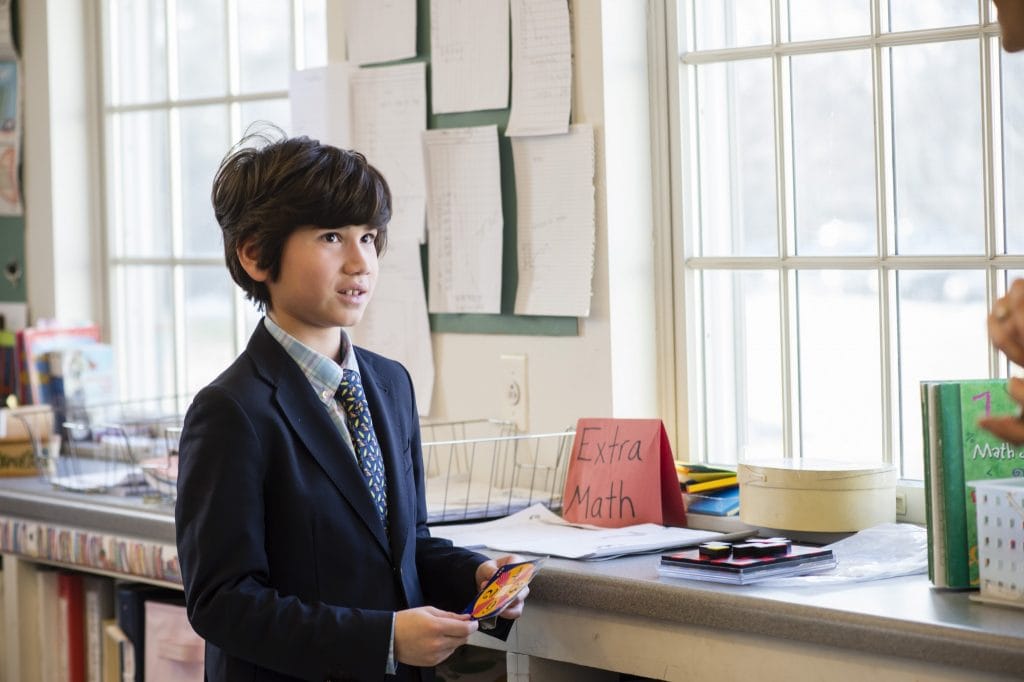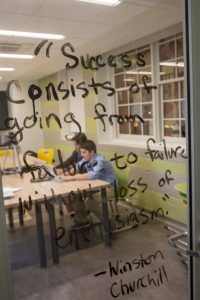
If you think back to your grade school experience, you probably remember learning in a self-contained classroom—a teacher-directed model in which students learn all core subjects within the same environment and study with the same peers and teacher. At some point, you switched to a different model; you began to move to separate classrooms for individualized subjects and engaged with different students and teachers. The transition away from a self-contained classroom is an important milestone in a child’s academic journey and can come with a range of emotions for students and parents alike.
The Importance of a Strong Fourth Grade Experience
Fourth grade is a year of significant change for growing learners, which makes it a great time to consider enrolling in a private school. Between small class sizes, flexibility in curriculum design, and state-of-the-art resources, private schools are often equipped to capitalize on the enthusiasm, passion, and love for learning that is distinctive of this age. It is a formative year that is important for success in middle school and beyond.
During the fourth grade year at Fessenden, students are nurtured and met where they are developmentally. They are also prepared for new educational experiences that will be appropriately challenging and dynamic. As the oldest students in our Lower School, these students are the role models for those in Pre-K through Grade 3, and they contribute to the division and the School at large throughout the course of the year.
By the time our fourth graders complete our “Lower School Closing Ceremony” to symbolize their graduation from the Lower School to the Middle School, our boys have a firm grasp on important skills and learning tools—and possess a greater independence and maturity.
All of this plays a critical role in the successful transition away from self-contained classrooms.
The Leap to Middle School
 While the transition to “middle school” can take place from sixth grade to seventh in many public school settings, it begins sooner at Fessenden. Children become “middle schoolers” in fifth grade, shifting away from a self-contained classroom and benefitting from a team-teaching approach. Though students become more mobile on our 41-acre campus and travel to different classrooms to study subjects—such as the humanities, math, and science—our interdisciplinary approach helps students make important connections between subjects. In the Middle School, teachers gather regularly to plan new academic projects and review each boy’s progress, which creates a support network for each student.
While the transition to “middle school” can take place from sixth grade to seventh in many public school settings, it begins sooner at Fessenden. Children become “middle schoolers” in fifth grade, shifting away from a self-contained classroom and benefitting from a team-teaching approach. Though students become more mobile on our 41-acre campus and travel to different classrooms to study subjects—such as the humanities, math, and science—our interdisciplinary approach helps students make important connections between subjects. In the Middle School, teachers gather regularly to plan new academic projects and review each boy’s progress, which creates a support network for each student.
How Boys Change in Middle School
Children in fifth and sixth grade begin to see how they fit into the world, rather than how the world revolves around them. In other words, the focus slowly shifts from “me” to “we.” There are distinct social-emotional changes that occur during this time, and students begin to discover passions and interests, and they learn about their areas of strength and opportunities for growth. And, students create a solid foundation of academic skills that will shape their learning and habits in the coming years. Breaking down the classroom walls of their former schooling compliments the natural changes that are already beginning to occur during this time.
Read up on the “ABCs of Middle School Boys” to learn more about the developmental changes that occur during this time:
The Role ‘Movement’ Plays in All-Boys Education
It’s no secret. Boys often need to move around. Research proves that there is a distinct link—especially for boys—between movement and increased focus. As an all-boys school, we help boys thrive by incorporating research-based practices designed specifically for boys into our program. We recognize that boys mature intellectually and emotionally at different paces. We also understand that boys need to play and run, refreshing their bodies and minds—so we save time for outdoor recess every day. Numerous athletic teams give boys the chance to exercise and demonstrate leadership.
Learning Outcomes
A successful middle school program will ensure that students have developed—or are on their way to developing—strong study habits. Children learn how to employ effective time management, start to hone their organizational skills, and discover an ever-growing list of interests and passions. All of these skills prepare students for success in their next academic experiences.
You Tell Us.
When did your child transition from a self-contained classroom? What were some of the challenges your child faced? What were the most significant areas of growth?




